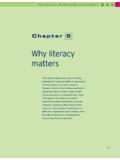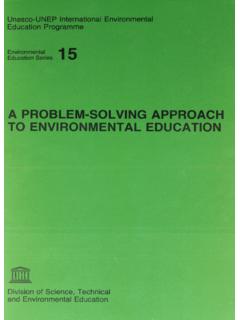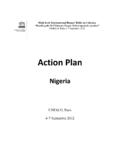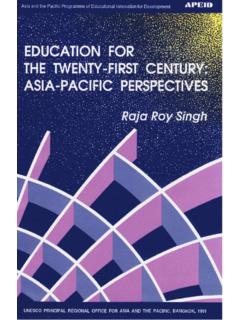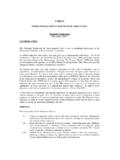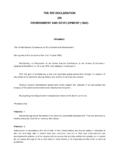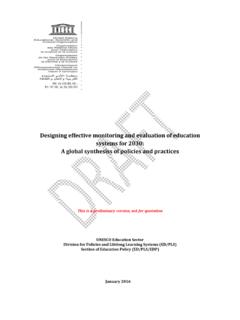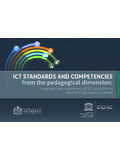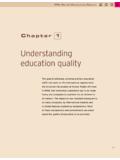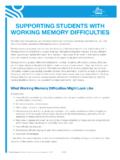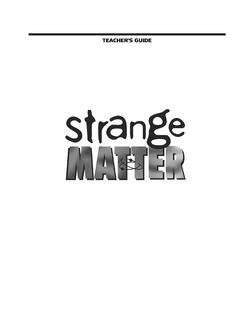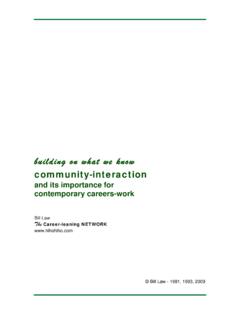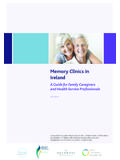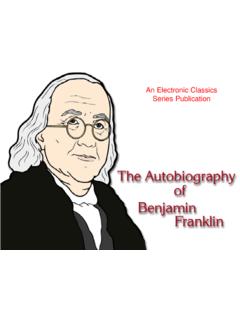Transcription of MEMORY OF THE WORLD REGISTER COMPANION
1 1 MEMORY OF THE WORLD REGISTER COMPANION The REGISTER COMPANION is intended to provide guidance in completing the form to nominate documentary heritage for inscription on the international REGISTER . Definitions of document types are still under preparation, but this version of the COMPANION is published as is to assist in the preparation of nominations ahead of the 2012 deadline. The COMPANION will also be published in other languages and these will be uploaded to the website as soon as they are ready. 2 1 Introduction This COMPANION is for everyone who has heard about the UNESCO MEMORY of the WORLD Programme and is interested in being a part of it, especially by nominating items of documentary heritage for the MEMORY of the WORLD International REGISTER .
2 You should also refer to the General Guidelines to Safeguard Documentary Heritage ( ), especially the Selection Criteria in Section , although this COMPANION provides all the information necessary to complete a nomination. What is the MEMORY of the WORLD Programme? It is UNESCO's flagship programme that aims to ensure the preservation and dissemination of valuable archive holdings and library and museum collections worldwide. It is one of three UNESCO initiatives for protecting and raising awareness of the global cultural heritage. The other two are the Convention Concerning the Protection of the WORLD Cultural and Natural Heritage, which maintains the WORLD Heritage List of buildings and natural sites of outstanding universal value, and the Convention for the Safeguarding of the Intangible Heritage which recognizes and supports the survival of oral traditions and culture.
3 The three approaches complement each other. MoW relates to the WORLD s documentary heritage. The programme has four objectives: To facilitate preservation, by the most appropriate techniques To assist universal access To increase awareness worldwide of the existence and significance of documentary heritage To alert governments, decision makers and the public at large that preservation of, and access to, documents of all kinds needs increased efforts, especially in the digital age, which offers truly democratic dimensions in the production of and access to new and existing documents. MoW began in 1992, in response to UNESCO's growing concern about the state of preservation of, and access to, the WORLD 's documentary heritage.
4 MoW was established as a long term approach to changing the way the WORLD s documentary heritage in libraries, archives, museums and elsewhere is valued, protected, used and supported by nations, governments, communities and individuals. Further information: MoW website In this COMPANION the numbers in brackets refer to numbered sections or paragraphs in the basic rules of the programme, the General Guidelines to Safeguard Documentary Heritage. Download the Guidelines: You can also ask UNESCO to send you a hard copy version in one of the 6 official languages. 3 What is a document? What is documentary heritage?
5 [ ] A document is an item that is made up of signs or codes (such as writing) or sounds and/or images (such as a recording, photograph or film), and is (usually) moveable, preservable, and able to be reproduced or Documentary heritage is a collective term used by MoW to refer to a single document of any kind, or a number of documents that form a logical and coherent group (such as a collection, a holding or an archival fonds). The size of the group does not matter; what holds the group together does. A collection is a self-contained group of individual documents that have been brought together by a particular circumstance, reason or purpose (for example, subject matter, character, provenance, or historical relationships).
6 An archival fonds is the whole group of documents made or received by a person or organization in the course of their normal activities and kept for future reference, and in which the administrative context and relationships between records is preserved. A holding is a set or larger grouping of defined collections and/or fonds. It is possible that collections, fonds or holdings may have become split between two or more institutions for various reasons. MoW defines a document as having two components or aspects: the information content and the carrier on which it resides. Both may be of great variety and, in the context of inscribed documents, of different degrees of importance.
7 Generally, in traditional (analogue) text documents, content and carriers form a unit which is usually considered as the original. Such documents may owe more of their value to the specific nature of the carrier (for example, the most beautiful, or the one that was produced and/or owned by a renowned person). In the case of machine-readable documents all audiovisual documents except analogue photographs and all digital documents the carrier, although necessary to physically hold the information, is of lesser, and often of no importance in the context of MEMORY of the WORLD . This is because digital and audiovisual information is generally preserved by migration from one storage platform and carriers to the next.
8 However, there are cases where the content stored on a particular carrier could be the reason for a document s inscription, for example, a phonautogram, or the oldest data on punch cards. Visual examples of different types of carriers: Examples of endangered heritage: For example: Text items such as manuscripts (of any age), books, newspapers, posters, correspondence, business records, computer files etc. The textual content may be recorded in ink, pencil, paint, digits or other medium, The carrier may be paper, plastic, papyrus, parchment, palm leaves, bark, stone, fabric, hard disk, data tape or other material.
9 Non-text items such as drawings, maps, music scores, plans, prints, diagrams or graphics. The recording medium and the carrier may be similarly diverse. 4 Audiovisual items such as sound discs, magnetic tapes, films, photographs whether in analogue or digital form, however recorded and in any format. The physical carrier may be paper, various forms of plastic or celluloid, shellac, metal or other material. Virtual documents, such as websites, which may be an assemblage of data from a variety of sources on a single or multiple computers, or from one or more data carriers on a single computer. Definitions of document types are being finalized and will be inserted at a later date.
10 How does MoW work? MoW fulfils its responsibilities through a UNESCO secretariat (Paris-based) and a network of committees and initiatives that operate in accordance with the programme s General Guidelines. You can connect with MoW through whichever committee seems most convenient to you. MoW has international, regional and national committees and registers. All have separate websites and operate independently but in conformity with the General Guidelines. The network is constantly growing, so a good entry portal is the main MoW website at: For example, the Australian National MoW Committee maintains a national REGISTER and is a member of the Asia Pacific Regional Committee (MOWCAP) Australian documentary heritage is inscribed on the national, Asia Pacific and International MoW registers.
